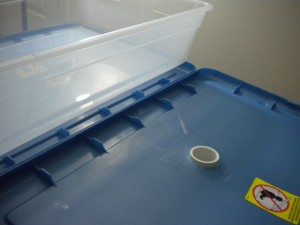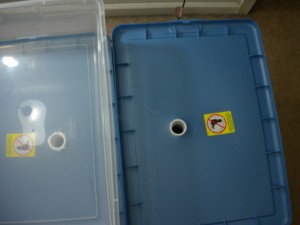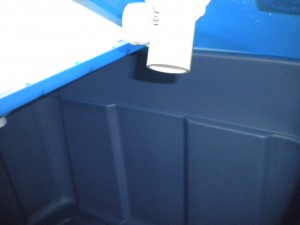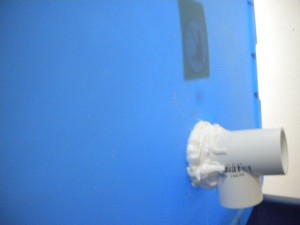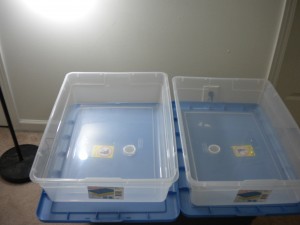A good garden has places where water can drain away from the soil. Drainage mostly applies to container gardens and raised garden beds. The amount of drainage versus the growing medium’s ability to hold water are important ratios to consider when setting up a garden for a new plant. Some plants require a lot of moisture while others may need their containers to dry out in between waterings. The ratio the plant requires will determine the type of growing medium, the type of drip emitter to use, and how much to water the plant each day.

There are countless designs for containers featuring different types of drainage. The container on the left is a massive planter and just has a few large holes on the bottom. You would want to put some small rocks or hydroclay over these holes. Most gardeners cover the bottom of the container with rocks so soil won’t drain out with the water. I like soil less growing medium rocks that can be used in hydroponic systems for a similar purpose. Some plastic containers also feature side drainage holes. It really depends on what you prefer.
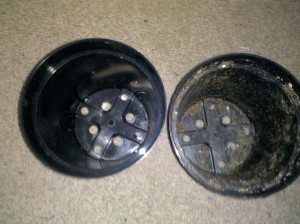
There are also containers that promote high oxygen levels in the root zone. Containers like Smart Pots have great drainage. Good drainage is key to maximizing the oxygen in the root zone. Smart pots can be used in soil and hydroponics gardens. They come in many sizes and can be used indoor or out. Economical gardeners favor them because they are high quality, highly productive, and washable. The Smart Pots can be re used or transplanted directly to the next pot or outdoor garden.

Some reasons drainage is important:
- Too much water is bad for your plants if they don’t need it.
- Do everything you can to prevent mold and mildew.
- Leaving water in the grow space can mean spills for indoor gardeners
- Bugs and Pests love a little extra water potentially filled with nutrients or sugars.
- Roots filled with too much water are being suffocated because they are not receiving enough oxygen
